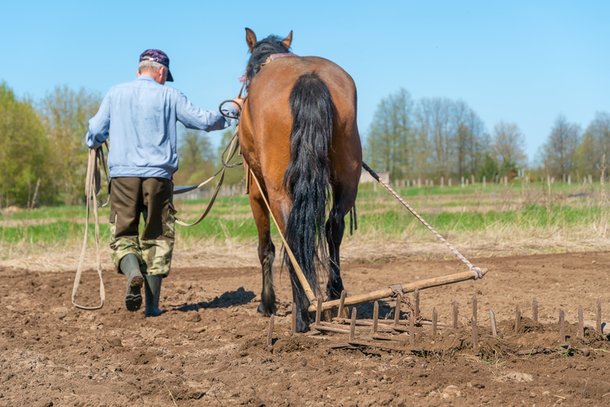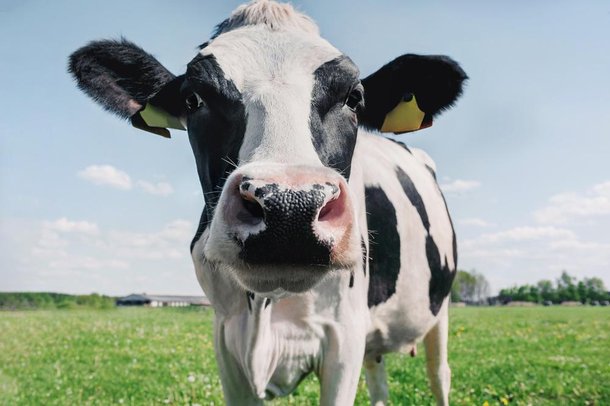Embora ninguém pareça saber quando as primeiras ferraduras de metal com pregos surgiram, elas se tornaram comuns na Europa por volta do ano 1000. Por milhares de anos, os humanos desenvolveram métodos diferentes para “vestir” as patas dos cavalos.
 (Fonte: gettyimages)…
(Fonte: gettyimages)…
Os asiáticos usavam um tipo de bota trançada para o casco do animal. Os romanos criaram “sandálias” de couro e metal. Tudo isso, há milhares de anos. Mas por que os cavalos precisam de ferraduras e outros animais com cascos, como as vacas, não?
Cuidando do melhor amigo do homem
Costumamos dizer que o melhor amigo do homem é o cachorro. Porém, historicamente, esse posto sempre foi ameaçado pelo cavalo. Ao longo do desenvolvimento da humanidade, os equinos nos ajudaram a cuidar do campo, transportar alimentos, fazer longas viagens, vencer guerras e conquistar territórios. Até atravessaram oceanos com os homens.
Também sempre estiveram conosco em uma série de competições e esportes, tanto na antiguidade quanto agora.

Por ter um papel tão importante, faz sentido que, ao longo dos milênios, as pessoas buscassem maneiras de cuidar melhor das patas dos cavalos. Ou seja, eles usam ferraduras, principalmente, para proteger e fortalecer seus cascos e patas.
No caso dos cavalos selvagens, seus cascos se desgastam gradualmente à medida que se movimentam de uma região para outra, especialmente quando precisam ar por terrenos áridos e duros.
Os cavalos de trabalho domesticados precisam ainda mais da proteção da ferradura para adicionar resistência e durabilidade aos cascos: como esses animais carregam o cavaleiro, puxam carruagens ou outras cargas pesadas, se não houver nenhuma proteção para suas patas, os cascos se desgastarão mais rapidamente do que na natureza.
As ferraduras ainda fornecem uma proteção adicional para o animal contra lesões em solo rochoso ou duro. E também ajudam a impedir que os cascos fiquem enfraquecidos devido ao solo lamacento ou molhado, comum em regiões de clima úmido.

Os cavalos que participam de competições de alto impacto, como saltos e corridas, podem se beneficiar com a proteção extra e o amortecimento que as ferraduras oferecem. Outras razões pelas quais esses animais podem precisar de ferraduras incluem:
- Para melhor o equilíbrio: quando o cavalo sofre com problemas de equilíbrio as ferraduras podem ajudar fornecendo um e adicional ao casco, visando melhorar a mobilidade e segurança do animal.
- Por questões médicas: alguns cavalos podem desenvolver condições que comprometem a força do casco e das patas, como artrite e laminite. Nesses casos, a ferradura pode ajudar a manter o cavalo mais confortável, permitindo que ele volte às suas funções com segurança.
- Para melhorar a tração: ao dar ao animal maior estabilidade e aderência em terrenos difíceis ou condições climáticas ruins. Existem até ferraduras específicas para cada situação, como as destinadas a condições de gelo.
E as vacas?
Bom, as vacas não têm tantas tarefas como os cavalos. Também não lidam com uma ampla variedade de terrenos. Na época em que os bois eram fundamentais nos trabalhos agrícolas, eles também eram ferrados.

No entanto, como seus cascos são fendidos, aqueles que ajudassem na tração precisariam de duas proteções em cada pata.
Por fim, nem todos os cavalos precisam de uma ferradura. Existem prós e contras na ferragem, e aquilo que funcionou para um animal pode não funcionar para outro. No final, tudo depende das circunstâncias em que se está pensando usar o cavalo.
Fonte: MegaCurioso